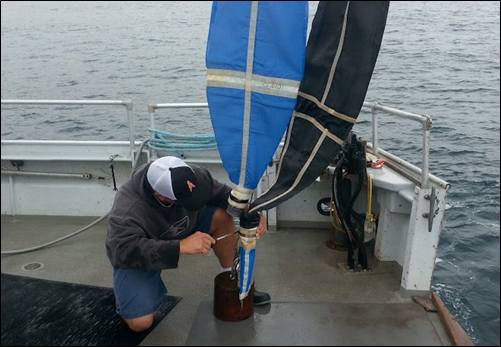New workgroup to standardize DNA-based methods for routine aquatic monitoring

The California Water Quality Monitoring Council has formed a statewide workgroup to be led by SCCWRP that will examine how to bring greater consistency and standardization to DNA-based analysis methods for routine aquatic monitoring applications.
The Molecular Methods Workgroup, established in September, will bring together multiple water-quality management agencies and research labs to develop best-practice methods for collecting, processing and analyzing DNA samples. SCCWRP’s Dr. Susanna Theroux will lead the workgroup.
Molecular, or DNA-based, analysis methods have emerged in recent years as a potentially viable, cost-effective approach for documenting the composition of aquatic biological communities. Instead of counting and identifying organisms via traditional taxonomy under a microscope, water-quality managers can now isolate and sequence the DNA of these organisms to gain insights into overall water body condition. Molecular methods also can be used to monitor for invasive and endangered species.
The Southern California Stormwater Monitoring Coalition (SMC) was among the earliest end users to test molecular methods for routine aquatic monitoring. During field sampling in 2016, SMC participants collected algae samples that researchers then identified via DNA sequencing and traditional morphological analysis. SCCWRP and its partners obtained DNA results within weeks of submitting samples for analysis, versus six months for traditional morphologic identification, and at a fraction of the cost.
Although DNA-based methods are faster, cheaper and more scalable than traditional taxonomic analyses, water-quality managers in California don’t have access to standardized protocols for collecting, processing and analyzing DNA samples, and then interpreting results. Consequently, different agencies and labs have developed their own protocols, resulting in DNA-based monitoring in California that is non-standardized, not coordinated among different agencies, and potentially redundant.
To ensure data sets are of consistently high quality and comparable statewide, the Molecular Methods Workgroup will seek to develop consensus around best practices for DNA-based methods, in much the same way that European countries have been doing through the DNAquaNet group. SCCWRP has been collaborating closely with DNAquaNet participants; an equivalent workgroup does not exist in the U.S.
The Molecular Methods Workgroup will focus initially on some of the biggest pain points associated with using DNA-based methods for routine aquatic monitoring, including minimizing cross-contamination during field sampling and lab analyses, and identifying optimal regions of DNA to target for benthic macroinvertebrate and algal community barcode sequencing.
All recommended protocols developed by the workgroup will be made publicly available online.
Initial workgroup members include the California Department of Fish and Wildlife, the State Water Board, the Surface Water Ambient Monitoring Program (SWAMP), the Smithsonian, the National Oceanic and Atmospheric Administration, and academic labs at the University of California, Los Angeles and UC Riverside.
The Molecular Methods Workgroup is scheduled to hold its first official meeting by the end of November. Any environmental agency or academic lab is welcome to join the workgroup at any time.
For more information, contact Dr. Susanna Theroux.
More news related to: Bioassessment, DNA Barcoding, Indices of Biotic Integrity, Top News